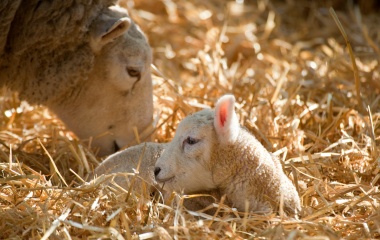
Rav Chaim Soloveitchik, when asked to define the main role of a rabbi, responded that it is to help the poor, the widow and the orphan. This towering genius—who refined and systemized an analytical approach to Talmudic study that literally changed the course of Talmudic study around the world—well understood that helping those in need is more important than resolving a contradiction in the Rambam.
Ironically, his genius often obscured his legendary acts of chesed, including those who were far from observant of Jewish law [1].
That a rabbi must close the Gemara and leave the Beit Midrash to do “pastoral work” is not some modern innovation of new movements seeking to undermine the primacy of Talmud Torah. “Rabbi Elazar said in the name of Rabbi Chanina: Torah scholars increase peace in the world, as it is stated (Yishayahu 54:13): ‘And all your children shall be taught of the Lord, and great shall be the peace of your children’” (Keritot 28b).
A Torah scholar—whether a Rabbi, Rosh Yeshiva or none of the above—must increase peace in the world. The more Torah one has learned, the greater the increase in peace there must be.
Reading carefully, one will notice that Rabbi Chanina’s statement is a factual one, not a prescriptive one. He does not teach that Torah scholars must focus on increasing peace in the world. Rather, he states matter-of-factly that Torah scholars increase peace in the world. In other words, regardless of how much Torah someone may know, if that person does not contribute in some way to peace in the world—between husband and wife, between neighbours, between people who do not like one another or even between warring nations—then that person is not to be considered a Torah scholar. “Her ways are those of pleasantness and her pathways are those of peace” (Mishlei 3:17). And if rabbis, G-d forbid—and all too often, it is G-d forbid—create more machloket, dissension…then they must bear the burden of the ensuing results[2].
I need not explain the centrality of peace in our tradition, though a little review is always in order. Peace, the Midrash (Tanchuma Bamidbar 22:1) notes, is the one and only mitzvah that one must chase after—bakesh shalom v’radfei’u (Tehillim 34:15)[3]. This, in contrast to other mitzvot—shiluach hakan, for example, which we read about last Shabbat and for which the Torah promises long life, where the mitzvah is observed only if one happens to come across a bird nest, ki yikarei. Ditto for the mitzvah to return a lost object, help unload a donkey, and so many more.
Rabbi Chanina’s teaching is the last one of masechet Keritot. How appropriate. The masechet discusses those sins that demonstrate total estrangement from G-d, a Jewish way of life and the Jewish people, thus leading to karet, excision. Oblivious to Jewish nationhood, one eats bread on Pesach; unconcerned with self-reflection, one eats on Yom Kippur; unwilling to commit to our covenant with G-d, one neglects to circumcise; not wanting to accept limits on their freedom, one violates the Shabbat; not respecting others (or themselves), one commit adultery.
If karet is the separation from one’s heritage, peace must include bringing one back to one’s roots. The Torah scholar’s role is to welcome back even those who have violated some of the most serious prohibitions of Jewish law—and may still be violating them. Return is always possible, “even one day before you die”. Only by actively demonstrating that the pathways of Torah are the pathways of peace can one truly succeed.
This teaching of Rabbi Chanina serves as the conclusion of five of the 37[4] tractates of the Gemara; in addition to Keritot, his is the last teaching of masechtot Brachot, Yevamot, Nazir and Tamid. Clearly, our Talmudic editors felt it was an important lesson. And not surprisingly, it has made its way into our liturgy; nusach Sefarad and all others says it each and every day, and nusach Ashkenaz (outside of Israel) recites it on Shabbat and yamim tovim, days on which shalom bayit is emphasized and the Jewish people come together as one.
Edited with great precision, it is no coincidence that it is these specific masechtot that were chosen for this teaching. Let us analyze one of these.
Masechet Yevamot[5] is a most tragic masechet. A man dies childless with no one to carry on his name. His brother will either do so, often at great personal sacrifice, or if not, be forced to publicly declare that he has no interest in doing so, and be spat at in the process of freeing his sister-in-law to marry others.
Having worked for a number of years in the pulpit rabbinate, I know that by far the most important work of a rabbi (and I suspect Rav Chaim would not object) is to be there when a family member passes away. To be there to listen, to try to provide comfort, to guide, teach and hold their hands in their time of need. Many a mourner, for good reason, may feel distant from G-d. An onen, one who has yet to bury a loved one, is forbidden to do mitzvot, the mechanism that brings us closer to G-d. Such would be preposterous at such a time. After burial, when the process of healing can begin, we don’t even mention G-d’s name when offering comfort; instead He is HaMakom, the place, one that may be very distant from man.
It is during the time of “Yevamot”, literally and figuratively, that Torah scholars must work hard to “increase peace in the world”—on both a personal and national level—bringing people closer to each other and to G-d.
“Yevamot” also gives us pause to recognize what is truly important in life; so many of the disputes we have with others are petty. Sadly but powerfully, it often takes the spectre of death to motivate us. Yet if we properly learn masechet Yevamot (and Please G-d, may it be learned only in theory) then we will be inspired to work to increase peace in the world.
[1] One relatively well-known story is that of Rav Chaim not allowing davening to start on Yom Kippur until all went home to get money to bribe Russian officials to release a member of (the anti-religious) Bund.
[2] In the Gemara’s telling, it was the lack of effort by the rabbis to lower the hatred between Bar-Kamtza and his host that led to the destruction of the Temple and the subsequent exile.
[3] We recently read Tzedek, tzedek tirdof, “justice, justice you shall pursue”, indicating that the goal of justice is peace. It is for this reason the Talmud highly recommends p’shara, compromise, over strict justice, as at times, the latter creates conflict.
[4] While the Mishna comprises 63 masechtot, only 37 of them actually have an associated Gemara text, the others having—at least until 1948—little practical relevance during the era of the Gemara.
[5] Please G-d, we will focus on masechtot Tamid, Brachot and Nazir in due course.



